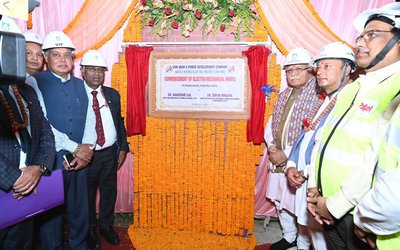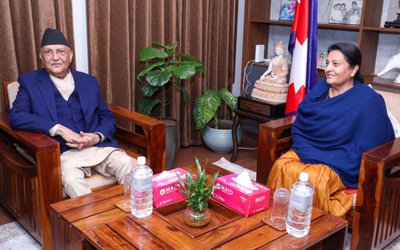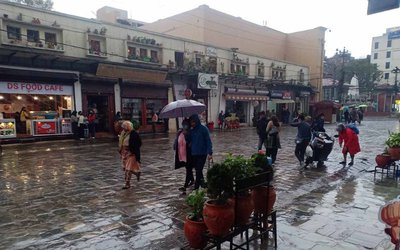
As there is no major hydropower project near completion to produce over 200 MW power for coming November, efficient management of power is the only way out before Nepal Electricity Authority to end the gap.
Given the current situation when the import of electricity is at saturation and no hydropower close to completion, NEA has a very limited choice except energy saving as the only way out.
According to NEA projections, there will be a demand of 1600 MW, with additional 200 MW power reaching over 1400 MW with 59 projects' installed capacity of 900 MW, which reduces to one third in the months of November and December. During the peaking, the demand will accelerate, putting pressure on the load. And there is the need to generate additional power.
During the dry season, Nepal’s hydropower plants supply 600 MW. With import of 400 MW, there will be a net gap of 600 MW in peaking. NEA believes that if it manages 200 MW under Energy Saving program, it can handle the load ending the load-shedding.
Despite availability of LED bulbs in the market, their quality remains poor. Thus, Nepal Electricity Authority (NEA) has decided to procure 20 million LED bulbs for the efficient use of electricity and to eliminate load-shedding from the country.
“We require 200 megawatts of additional power in the winter season this year to cater to the demand of the dry season, but lack large scale projects that can cater to the rising demand.”
“Replacing the existing bulbs with LED could save 200 megawatts of power, while importing this quantum of power during dry season from India would cost over Rs five billion,” said NEA Managing Director Kulman Ghising.
“As per our immediate plan to reduce load-shedding, we have planned efficient use of electricity by replacing existing CFL and other bulbs with LED bulbs.
For the last seven months, NEA has already made Kathmandu, Bharatpur and Pokhara ‘load-shedding-free cities.’ NEA has announced it would eliminate load-shedding across the country from this year.
At a time when there is massive use of non-quality led bulbs, it is not helping much. Thus, NEA took the decision to procure LED from Energy Efficiency Services Ltd (EESL) of India at INR 65 or Rs 104 per bulb.
As the Cabinet meeting last week principally agreed to procure the LED bulbs through the government-to-government (G2G) negotiation as proposed by Ministry of Energy, NEA can procure LED from EESL.
With so much of vested interests, NEA’s deal with EESL has been dragged into controversy as it decided to buy LED bulbs from the Indian supplier without fulfilling any competitive bidding process.
NEA Managing Director Ghising also defended the charge of ‘irregularity’ in the procurement process of LED bulbs. “We are ready to be hanged if any irregularity is proven,” he asserted, adding, “We have decided to procure LED bulbs of reputed brands, Philips and Osram, which come with three-year replacement warranty from EESL, with the pious objective of efficient use of energy.”
Nepal government has decided to purchase LED lamps from India as per the discussion of the Nepal-India energy secretary-level talks. In last year’s meeting, the Indian side had proposed to supply LED lamps to Nepal for efficient use of available electricity and EESL has forwarded its proposal through the Embassy of India in Kathmandu to the Ministry of Foreign Affairs (MoFA). The MoFA had then forwarded it to the Ministry of Energy.
EESL had proposed to supply 10 million LED bulbs within three months and another 10 million in the second phase.
With the demand of energy increasing, NEA has embarked on a mission to promote energy efficiency. The LED program is an effort in that direction. According to NEA, the LED program could offer immediate relief by reducing the peak demand and avoiding load-shedding.
NEA is planning to sell these high energy efficient bulbs at Rs 135 to Rs 140 per bulb after adjusting customs, value added tax, transportation charge, handling charge and damage loss, among others.
As Nepal requires additional energy to avoid load shedding, there is no other way than to distribute 20 million LED bulbs across the country. It will maintain load as well as save Rs 40 billion. According to NEA spokesperson Prabal Adhikari, generating 200 MW power would cost more than the monetary value of the bulb deal.

Keshab Poudel
Poudel is the editor of New Spotlight Magazine.
- KUL MAN GHISING: Bowing Down To The People
- Apr 13, 2025
- POLITICAL VIOLENCE: Culture of Impunity
- Apr 11, 2025
- PM OLI MEETS PM MODI: No Progress
- Apr 09, 2025
- PM OLI’S THAILAND VISIT: Flip Flop
- Apr 08, 2025
- FM Dr. Deuba’s India Visit: Mission Aborted
- Mar 26, 2025















